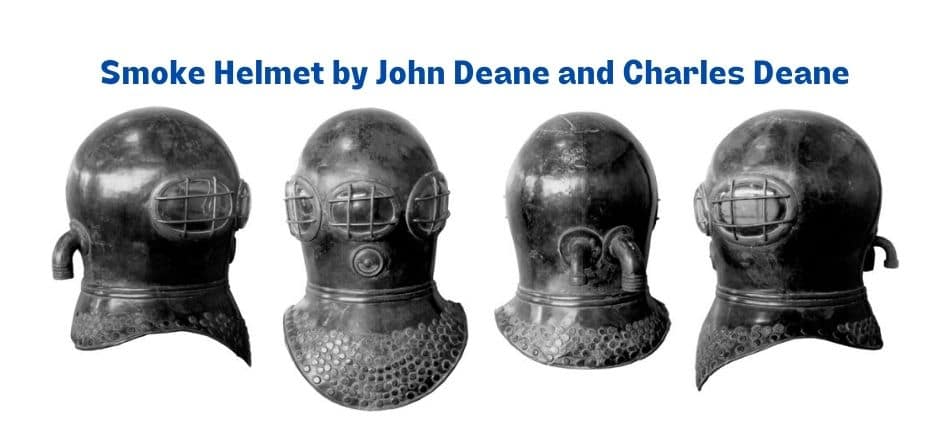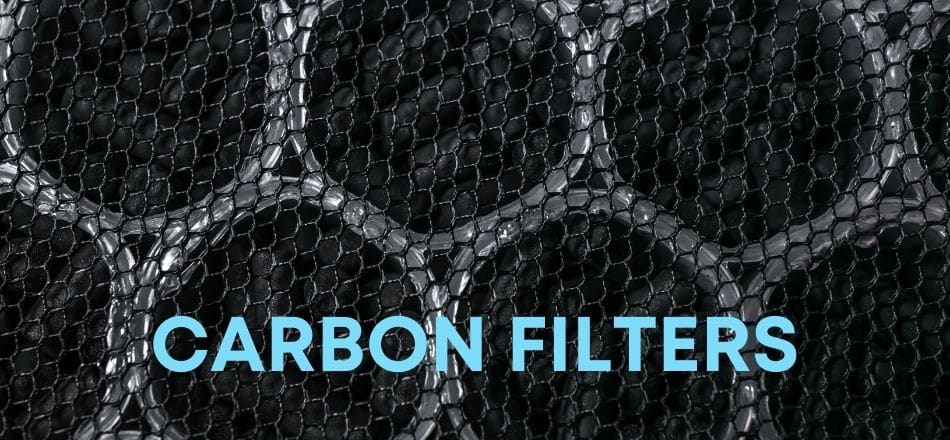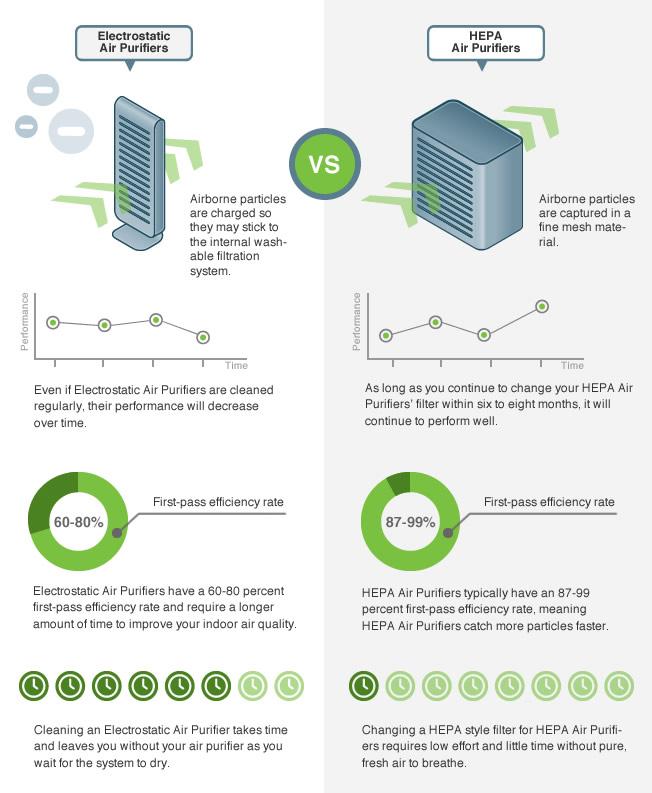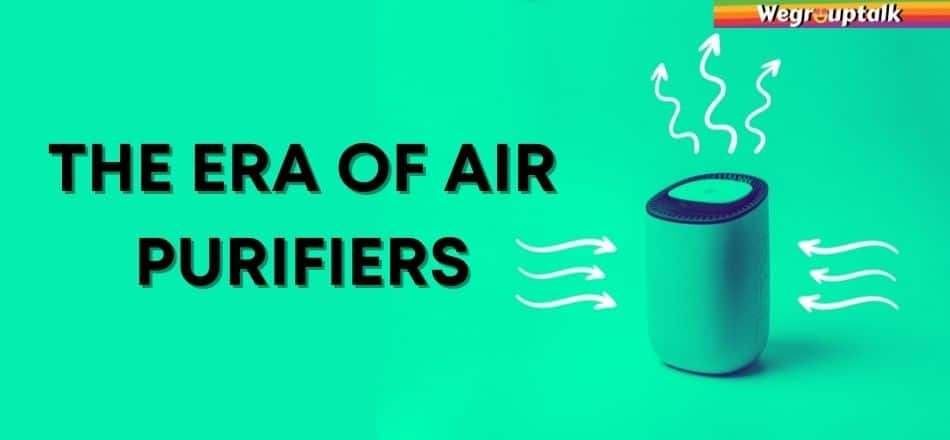What is the most important element in the biosphere for humans? Ah! I hope everyone must be thinking in the same direction, which is the only right direction, AIR! After facing a pandemic because of COVID-19, which primarily affected the respiratory system, the value of air, or shall I say clean air, must be known to us. Since childhood, the famous quote that we have been reading,” water, water everywhere, not a drop to drink!” can be easily replaced by “air, air everywhere, not an ounce to breathe!”
But we being ourselves have brought the expected in the world, SHAME! We have brought all sorts of smoke, dust; newly COVID-19 infected air which might club as impurities together to form the new GenZ air. It might not be wrong to call it as corrupt as the present human mind.
As we have introduced the causes of impure air or, as I would fancy it by saying, diseased air, the manufacturing industry has also created a cure. Pretty evident from the title, it is none other than Air Purifiers.

There are two categories of air purifiers. Man-made and natural are the easily guessed diversifications. So we’ll stick to it. As humans love to compete and race even with the bountiful nature, let’s start with the type that came first in the world.
Natural air purifiers
Mother nature has medicine for every disease, even impure air. Yes, yes, yes, this category includes plants, but it has several other variants. So tie your aprons tightly to prepare the recipe of pure air naturally.
Salt crystal lamps
The most effective salt rock to purify the air is the Himalayan pink salt rock that acts as a magnet to the toxins, irritants, allergens, and pathogens of the air. Nowadays, it is beautified with a rustic touch of the yellow light that is put in the hollow curvature of the cut rock piece. It might also add to the aesthetics of your interior.

Beeswax candles
Though all candles give a soothing vibe, this special candle also reduces pollution. They ionize the air and balance out the contaminants. The fun fact about this is that they create no smoke and have no scent.

Houseplants
Plants have always been the prime and centric source of clean air by providing oxygen. But do you know that the indoor plants which are trendy these days act as natural air purifiers at a zero manufacturing rate? They add scenic beauty to the offices and households’ aesthetic interiors and filter toxins from the air. Some fine examples of such plants are money plants, Boston fern, silver vine, centipede tonga vine, snake plant, etc.
Activated charcoal
Activated charcoal, also known as activated carbon, is an odorless solution to eliminate toxins from the air. It has high absorbent properties.

Man-made Air Purifiers
Man-made air purifiers date back to the eighteenth century. Coal-based industries causing a revolution multiplied several folds to create air pollution. It yearned inventors to create air purification devices.
A system that removes pollutants from the air in a room to improve indoor air quality is known as an air purifier or air cleaner. These devices are often advertised as helpful to allergy and asthma sufferers and limiting or eliminating secondhand cigarette smoke.
Commercial air purifiers are available as small stand-alone units or larger units that can be attached to an air handler unit (AHU) or an HVAC unit in the medical, manufacturing, and commercial industries. In industry, air purifiers can be used to extract impurities from the air before it is processed. Adsorption methods such as pressure swing adsorbers or other adsorption techniques are commonly used.
John Deane and Charles Deane, the two inventor brothers, created a product to assist firefighters at that time. The “smoke helmet” was supposed to be used by the firefighters in smoky areas. John Stenhouse improvised this invention of 1853 in 1854 by adding a charcoal-based filter technique. It was made for personal use. In 1940, one of the 19th century’s successes was achieved. HEPA was established by scientists this year (High-Efficiency Particulate Air Filter).

This technology was created to prevent soldiers and scientists in the lab from inhaling radioactive particles. The HEPA filter was a success in eliminating the tiny particles on the Manhattan Project. It also helped filter microscopic air pollutants such as pollens, molds, pet dander, smoke particles, and other small air pollutants.
In 1963, Manfred and Klaus Hammes created the first air purifying system for a home. It was a success for many households in Germany. In the same year, the united state enacted the Clean Air Act. The rule paved the way for innovation on air purification techniques to have clean air across the states.
The Association of Home Appliance Manufacturers (AHAM) created a metric called Clean Air Delivery Rate (CADR) to calculate the efficiency of air purifiers in the 1980s.

Latest Developments
The most recent air purifier development activities have focused on items that address multiple chemical sensitivities. Several air filtering concepts are combined in new air purifiers. These technologies effectively trap pollutants, allergens, and gases. As a result, various stakeholders, including the medical community, are advocating air purifiers as a way to combat allergies and asthma. New air purifiers also using particle sensors to run automatically based on the ambient air quality. Some have implemented wireless technology to check the status and control them from their mobile phones.
Among other air filtration technologies, HEPA air purifiers are the most effective and popular.
Fun facts about Air Purifiers
- HEPA was conceived during World War II, and, ironically, such a life-saving product will emerge at a time when countries are at odds. Soldiers and lab staff were supposed to be protected from radioactive matter from bombs with this product.
- Since the smoke and fumes from a fire are toxic to the lungs; firefighters were the first to benefit from air purifier innovations. Firefighters didn’t have many choices for protection back in the day. To help them combat contaminants and smoke from fires, inventors invented the first air purifiers.
- Air purifiers are the best indoor devices because, according to EPA reports, indoor air pollution is higher than outdoor air pollution. Pollens, allergens, volatile organic compounds (VOCs), pet dander, dust mites, and mold spores can all be found in a home. All of these pollutants in the air cause allergic reactions, coughs, asthma, and other respiratory problems.
TYPES OF MAN-MADE AIR PURIFIERS
There are nine types of man-made air purifiers.
- HEPA FILTER AIR PURIFIERS: High-Efficiency Particulate Air (Hepa) is an acronym for High-Efficiency Particulate Air. Hepa filters have been around for a long time, and, as the name implies, they are excellent at removing particles. According to industry standards, a Hepa filter must capture a minimum of 99.97 percent of particles larger than 0.3 microns. To put this in perspective, human hair is usually 50 to 120 microns thick. Basically, it cant be seen by the naked eye.

- CARBON FILTER: Carbon air purifiers depend on a very porous form of activated carbon, either made as a powdered block or in granular form. Because it’s extremely porous, a tiny portion of it can have a very large surface area, which helps the air purifier with an activated carbon filter absorb huge quantities of contaminants.
- Adsorption, which is nothing more than a chemical reaction between organic compounds and activated carbon that causes the compounds to adhere, is how carbon filters operate. Carbon filter air purifiers are especially good at eliminating strong odors like smoke because of this filtration process. They are often used in conjunction with Hepa filters, and when used together, they are capable of trapping and removing a variety of contaminants such as spores, mold, dust, and smoke, as well as any odors that these pollutants may produce.

- HUMIDIFIER AND AIR PURIFIER COMBO: Cold air is unable to retain a large amount of moisture. This is why you get cracked skin and a dry nose in the winter. A humidifier is an excellent way to combat the symptoms of dry air. On the other hand, a humidifier presents its own set of problems: the increased humidity in your home can serve as a breeding ground for anything from bacteria to molds.
- IONIC AIR PURIFIER OR IONISER: Ionic air purifiers, also known as ionizers, are based on a high-tech air purification model that employs ion generators. The ozone air purifier’s generator produces a steady flow of negatively charged ions. The ions attract dust, allergen spores, and other contaminants. Ionic air purifiers, also known as ionizers, are based on a high-tech air purification model that employs ion generators. The ozone air purifier’s generator produces a steady flow of negatively charged ions. The ions attract dust, allergen spores, and other contaminants.
- UV: UV air purifiers will get rid of potentially dangerous germs and viruses in your house.UV stands for ‘ultraviolet,’ and these air purifiers are also known as UV light air purifiers because they disinfect the home’s air with UV light. UV light is now divided into three sub-bands. UV-C light is of particular interest to us because it is this band of UV light that is particularly effective at destroying pathogens and harmful particles in your home. A UV air purifier gets right to the source of the problem, disrupting the pathogens’ core DNA. This avoids the spread of harmful contaminants.

- PORTABLE: Portable air purifiers are those that clean a single room or an area that is equally enclosed. If your home doesn’t have central air conditioning or heating, room air purifiers are the default solution. Portable air purifiers come in a variety of sizes and weights, but they are typically light and simple to transport, weighing less than 20 pounds.
- WHOLE-HOUSE AIR PURIFIERS AND CLEANERS: They are designed to clean the air in a much larger environment, probably the entire house, as the name implies. You’ll need professional assistance to install a purifying device like this since it usually needs to be connected to your heating or cooling system and wired into your home’s internal electrical system. Filter-based systems connected to furnaces, duct-based systems, and stand-alone systems are the three types of whole-house air purifiers. Whole-house air purifiers and cleaners are more costly than their portable counterparts due to their greater coverage. They are, however, arguably the best choice if you have serious allergies or asthma.
- WHOLE-HOUSE AIR FILTERS: These filters are simple to use, don’t need professional installation, and are much less expensive than whole-house air purifiers. The disadvantage is that they clean the airless thoroughly. WH air filters operate on the general principle of filtering air and removing small to large particulate matter, but they aren’t quite as good at trapping micro-particles. Whole-house air filters are the most basic way to disinfect the air in your home, and they can be found in non-specialty stores.
- ELECTROSTATIC PURIFIERS: Electrostatic precipitation employs electrostatic forces and includes two collection plates as well as discharge wires. The fundamental idea is as follows: A high voltage creates an electric field between the plates and wires. The charged contaminants that have been ionized are forced to accumulate on the plate to be easily extracted by the field.

Too much air purification. Right? Now, go, and have a Gedi (aka pointless ride with blasting music on) to further use air purifiers. On a laughing note, I end this article with a self-written quote.
“The value of something is only realized after its adulterated, value everything now because you never know when is the last time.”
Stay connected on Facebook, Instagram, and Twitter for more!!
Also Read: What are Microplastics?




